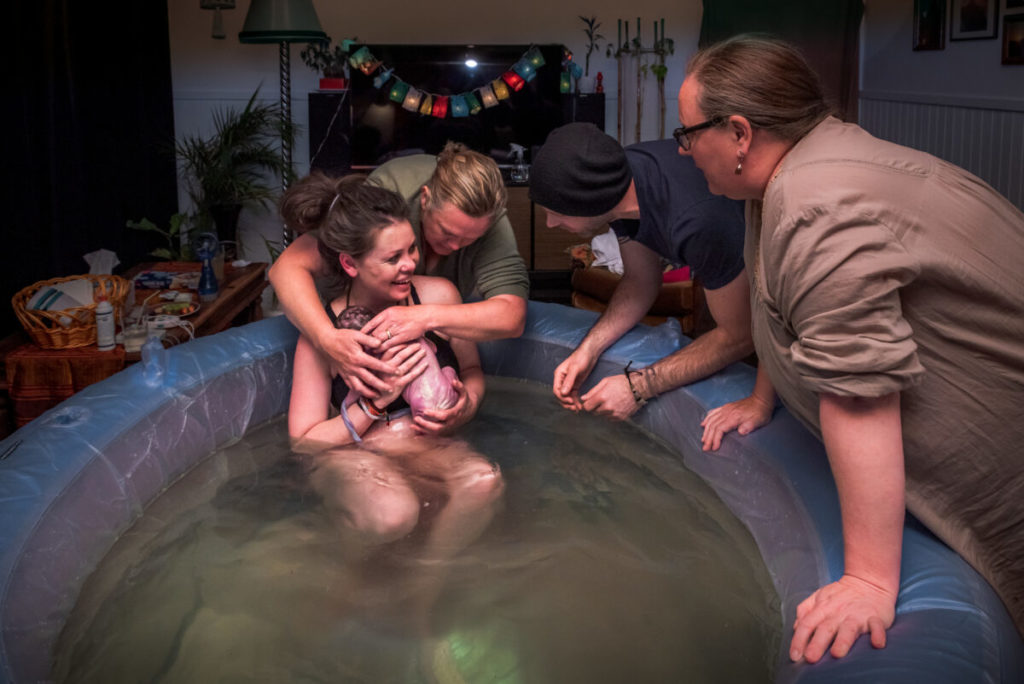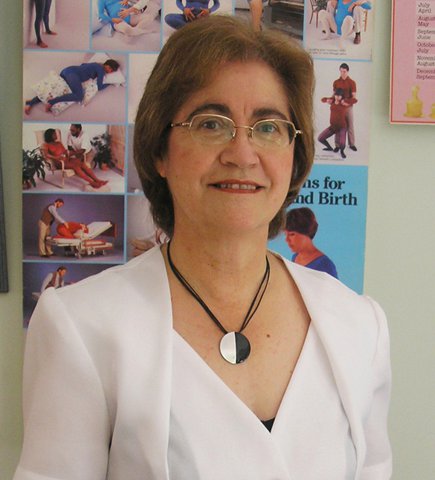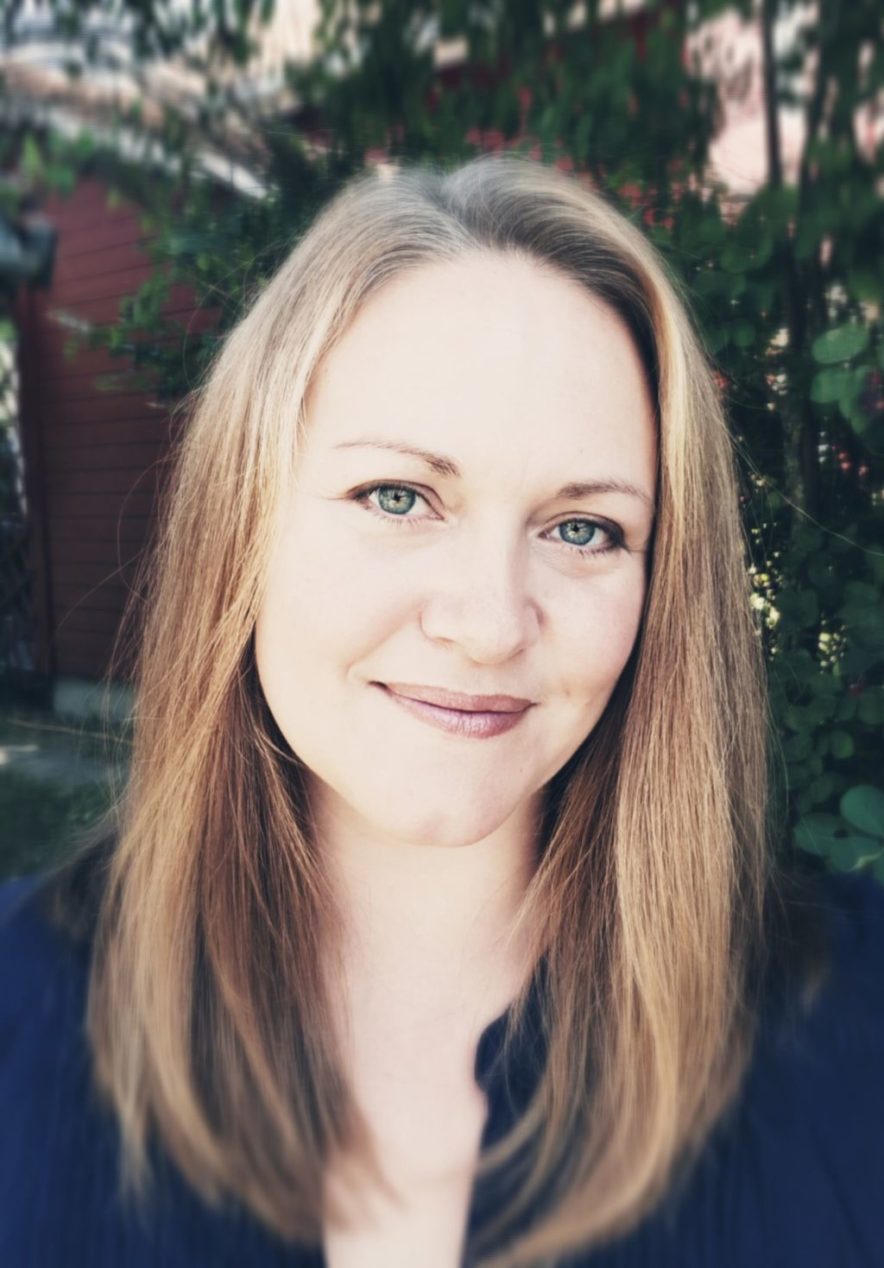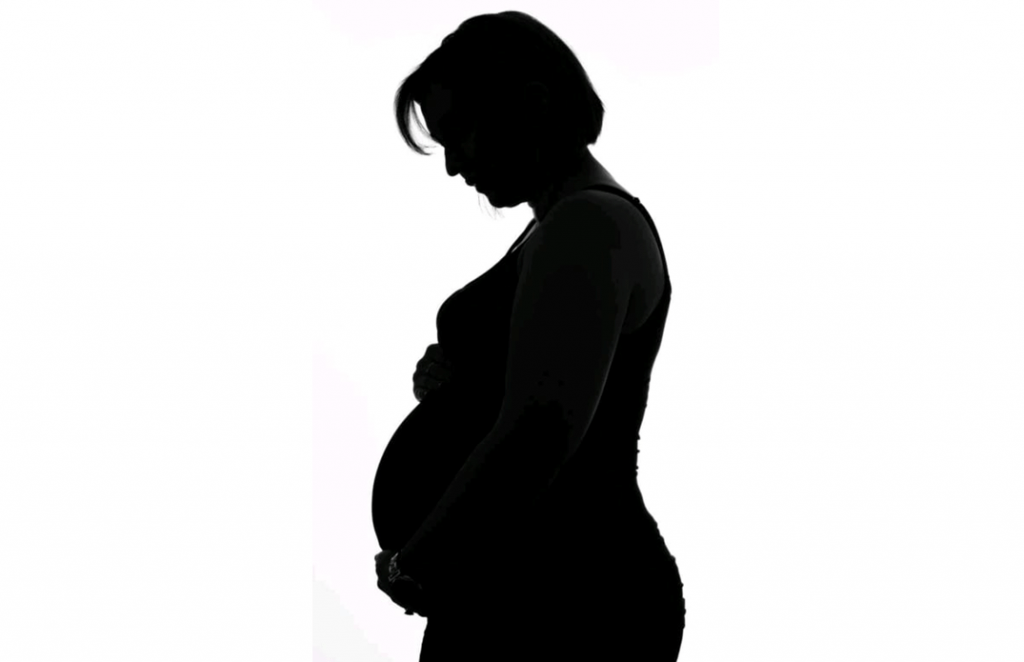
Up till 70 or so years ago most births happened at home. This usually meant that the familiar village midwife would be approached some time in pregnancy and simply notified that she would be called during the time span of early or late in a particular month. No due date. Simply some time around…. ‘when the baby knocks, I’ll just open the door for him!’
When the baby did ‘knock’, there would usually be a couple of other experienced mothers in the house, obviously chosen by the mother herself. Husbands wouldn’t be allowed anywhere near. They know nothing about births. The trait in the male character of wanting to focus on quick solutions all the time, may even make their presence inappropriate in the birthing room. Women always felt that births are not about making it fast. It is about making it a meaningful experience.
The mother was the hostess within her own familiar home, so she still remained the protagonist in the birth story. It all revolved around HER. If not the first birth, neighbours or family members made sure that the new, still-to-be-born baby’s siblings were either asleep or sent to aunties to be cared for during the day. Everyone around the mother saw to her comfort. She was fed and hydrated, reminded to pee to make space for the baby, affectionately hugged and touched, brows wiped, back pressed and massaged, hot water bottle prepared, clean sheets on the bed, old sheets and towels at hand, chicken broth ready, candles lit, kettle on, prayers said, and when the time was ripe, (or her cervix was riper, for that matter!) the midwife would then be called in time to catch the baby.
If the experienced midwife, probably a close family friend, happened to be free that day, she would join the group of women in good time. They would make it a ladies’ day, reassuring everyone that all was well. In a soft voice, away from the mother’s hearing distance, she would whisper that if not all seemed to go well, (and only if not), she would know and play safe. Of all horrors, she would have to call the doctor. Yes, she would reluctantly do so, as no-one wanted a doctor to be seen coming into the house. It was kind of shameful, but obviously, in rare situations, it was indeed a necessary evil, and had to be done.
That is exactly the story of birth I have heard so many times, before I became a mother myself. That is how I was born at home, a breech, straight into the able hands of the village midwife. That is how my husband was born, one of previously undetected twins, in a shelter during the war. Not one visit to the doctor ever, but only a sample of urine possibly taken to the pharmacy to detect the pregnancy as early as possible, if ever. Some would not even bother. They would just wait for a couple of periods, and if these do not appear, then the pregnancy was confirmed, two, three or more months already into the pregnancy!
With today’s standards, this is certainly considered far from ideal. Over the last decades, pregnancy care has definitely improved and have saved a lot of babies, and mothers. Births were eventually taken from home to hospital in the name of safety and hygiene. In the circumstances of post war days, maybe it was good for the physical body, but how did this generally affect the birth experience for the mother, psychologically, emotionally and socially?
It is today a known fact that hormones play a special role in pregnancy and birth. In preparation for the birth, a concoction of hormones and chemicals mostly produced by the mind, the brain and the placenta for the right balance of a ‘cocktail’, are produced over a period of days, even weeks, at the end of pregnancy. The ‘nesting instinct’ starts. Most of the time, the mother does not even know it. The much awaited ‘show’, the mucus plug, would denote that the cervix is starting to soften with nature’s intention to make the job of the birth much easier on both mother and baby, when labour starts. The trick is to wait, wait patiently for the right time. When one main particular hormone, ‘oxytocin’, reaches an appropriate level, contractions would start, very slowly at first, to prepare both mother and baby for the big day. ‘Oxytocin’, also known as the ‘love’ hormone, brings about contractions. It also gives the mother all she needs to start loving her baby as soon as possible when she sees her baby. Oxytocin naturally brings with it, among others, ‘endorphins’ the HAPPY hormones which act also as natural painkillers, and also prolactin in preparation for breast feeding. A cocktail of hormones indeed, all geared towards the prolonged well-being of both the mother and the baby.
All of this happens naturally a million times a day around the globe within all the mammals that give birth daily in their natural safe surroundings…unless the dreaded FEAR hormone, ‘adrenalin’, finds its way into the mind and body system, in one way or other. Adrenalin, in itself, is not a negative in everyday life. It usually saves lives by making all of us aware of danger. It instantly switches on the fight, or flight, or freeze reflex. In a birthing mammal who senses danger, it actually stops the birth and gives her time to run to safety. Birth will not resume until the mother internally feels that all is safe for her and her baby. At some point, usually hours later, when she truly feels safe, adrenalin decreases, and then, only then, will oxytocin, with all the other positive hormones for birth, start seeping back into the mother’s system once again. Her newly restored birth hormones will now give permission to her body to go on with the birth.
Compare and contrast this with today’s human births in most hospitals:
- A due date is given and fixed
- A sweep is done a couple of weeks before the proposed due date
- If no sign of birth, the mother is asked to go in, on a certain date, at a certain time. Usually well timed to fit in her doctor’s schedule
- No familiar person with her except her partner, an alien to births even more than she is. She only meets her midwife for the first time during the birth. If lucky, she can discuss her birth plan, that is, if she has thought of it before.
- Hours pass. Change of shift. A new midwife comes in, with whom she needs to bond all over again. Repeat the above.
- Other mothers having babies are usually within sound reach. So, natural ‘birth sounds’ need to be kept to a minimum. There is no place for ‘oohs’ and ‘aahs’, which are usually associated with a bedroom!
- To prevent this, on entering the ward, she is asked what pain medication she would choose.
- Probably at a point, there will be a change of room
- Privacy highly questioned. Albeit with good intentions, the mother is disturbed continuously.
- Hospital smells, hospital paraphelnalia, gadgets, wires and pipes are all she sees for the next twenty hours or so.
- Monitors, drips, clanking of utensils makes the mother feels she is in an operating theatre.
- She is checked vaginally every four hours. Progress has to fit in a schedule.
- Because of all the continued disturbances, most probably, birth progress will stall.
- Sure enough, if progress is not up to expectations, ‘Failure to progress’ is declared.
- Problem caused, so problem has to be solved somehow.
- More artificial hormones are pumped into the system to do their job and speed up labour to fit in the required schedule.
- Still no baby in the required good time? A C-section is considered and performed
- With great relief to one and all, baby is delivered.
- Whichever way it happens, who cares? The mother, and probably everyone around her, will thank God, and probably her doctor, that it’s finally all over.
- Shouldn’t all be happy and thankful for a ‘healthy’ baby?
Have we explained that ADRENALIN and OXYOCIN simply CANNOT exist in the same body, both at high levels at the same time? Adrenalin in the mother defeats her other hormones, for her own safety’s sake. Nature knows that saving the mother must take priority. Without her the baby cannot survive! The situation that causes the FEAR hormone ‘adrenalin’ to rise, instantly INHIBITS the birth hormone ‘oxytocin’ to work. Yes, mainly, it is DISTURBING the birthing mother in one way or other that causes adrenalin to rise profusely. What disturbs the mother? Little things like simply walking into an alien place, smell the unfamiliar ‘hospital’ smells, hear unfamiliar sounds, meet people for the first time, knock at her door in moments of privacy, among others…. and her adrenalin level will definitely rise. Birth stops instantly. Have a look at all of the above dotted points. One only needs to give a little thought to realise what causes the negative effect on the birth progress and its stalling.
Compare and contrast the human births of the past and births of today. It is little wonder why interventions during births today are on the increase. It is not because mothers of today are any less capable of giving birth. It is the way the births of today are managed. Little attention is given to the normal physiological process of body and mind working together, and its adverse effect on the smooth progress of the birth.
With this knowledge, a balance between the beauty and fascination of natural births and safety standards of today can easily be found, for those who want them. As in other countries, a well-planned, midwife-led Birth Centre working in liaison with the hospital may not only be possible, but may be the answer to less medications required. This helps healthy mothers and newborns to not only need less interventions, but also to make them less prone to hospital disease. The Covid era is a case in point. Why take a healthy woman into a disease-laden hospital? In a small island like ours, a system of family-centred care, led by a team of professional midwives helped by professional Doulas can easily give the much needed holistic approach and continuity-of-care. With this kind of quality care, it is no wonder that many studies show that positive births are also associated with less interventions, more success with Breastfeeding and less occurrence of postnatal depression in both mother and father.
An internationally renowned doctor, Michel Odent, a household name where natural births are concerned, once said: “The best place where to have a baby, is the best place where you can make love!” After all, it IS the same kind of hormones that are needed, isn’t it? If both experiences are on the same wavelength of sexual experiences, who would choose a busy hospital room over a quiet SPA surroundings in both circumstances of making love or birthing a baby?
No, having a baby is not just about the body. In fact, related studies prove that it is a lot MORE about the mind. When shall we come out of the rut we have fallen into where births are concerned? It is time we start thinking on this level, really respecting birthing mothers in a truly holistic way. It really doesn’t take much. In fact, besides all the benefits for mothers and babies, and their respective families, it is also financially much more cost effective, and very gentle on Malta’s coffers, both in the short term and in the long term.
Hope springs eternal.
Do you have a birth experience you’d like to share with us at Wham, either in your name or anonymously? We’d love to hear from you! Contact us or send us an email at [email protected]

Marianne Theuma. Mother of 3, grandmother of 5, qualified teacher, childbirth educator, parent educator and experienced Doula.





